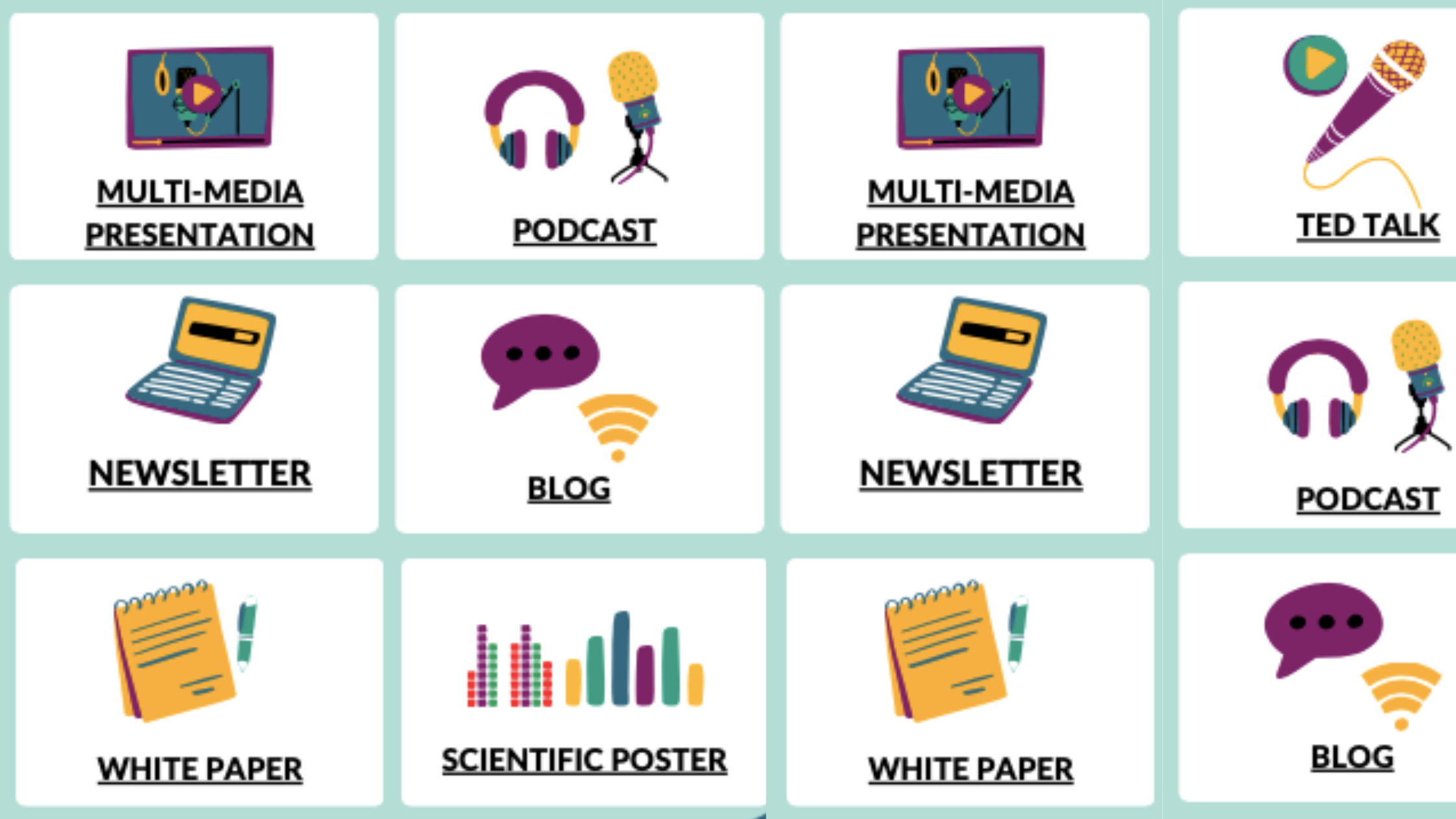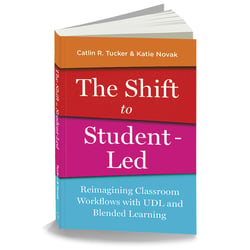As a lover of all things UDL, I get a lot of questions about choice. How often should you give students choices (Answer: Daily), what is the appropriate number of choices to provide (Answer: 2-4 is the sweet spot. Seriously - it’s well documented!) How often should I use a choice board? I don’t have an easy answer to that one. Let me explain.
The first thing that you need to consider is the purpose of the choice board. Ask yourself, is it:
- To provide options for students to learn?
- To make meaning of a student’s learning?
- To provide options for students to share what they know?
Once you have established the goal of the choice board, use these strategies, outlined in Cat Tucker and I’s book, The Shift to Student-Led.
Choice Boards for Learning
When you task your students with building background knowledge on a topic, such as the Industrial Revolution or Photosynthesis, you may tell them that they can do that by watching a short video, listening to a podcast, or reading or listening to a text.
The Dilemma: You’re probably thinking that it would be a huge investment of time to curate all that content, but not when you shift to student-led.
Try This Instead: Have your students make their own choice board! It is critical that students know how to find and identify high-quality materials. So instead of curating the resources yourself, you may split your students into groups and share one text and challenge them to work together to create a text set. One group can work together to find a really awesome video (ideally with captions included!), another group can collaborate on finding an informative podcast (bonus - ensure they get the transcript when sharing the resource with others), and another group can find a compelling article. Then you’ll put a choice board together and then everyone in your class can decide on one additional resource to explore outside of the text that you provided.
Choice Boards to Make Meaning/Show Knowledge
Good news - choice boards that provide options for students to make meaning or share what they know can be used over and over again! For example, if you are working towards a writing standard, you could always provide these options to your learners to help them prepare:
- Create/fill out a graphic organizer to organize thoughts
- Make an outline to organize your writing
- Review sentence stems
- Explore writing rubrics (share a narrative, argument, and informative)
These choices do not need to change. As long as you are working toward a writing standard, they will work!
When working on a content standard, students need to express their learning by understanding, explaining, or summarizing. The following standards are all content standards.
- Explain the development of colonial governments and describe how these developments (e.g., legislative bodies, town meetings, and charters on individual freedoms and rights) contributed to the Revolution. [History]
- Understand that a two-dimensional figure is congruent to another if the second can be obtained from the first by a sequence of rotations, reflections, and translations; given two congruent figures, describe a sequence that exhibits the congruence between them. [Math]
- Interpret intent and meaning in artistic work. Use specific vocabulary to identify details about a musical work. [Music]
- Describe the growth patterns and body changes within human beings throughout the life cycle (from prenatal through late adulthood), including critical periods in growth and development [Wellness]
For all of these standards, students could share their learning in any of the following ways:
- Join a Discussion
- Write a response
- Put It in Action (record a video)
- Record Audio (make a podcast)
You can identify these options, or you could co-create this with students!

As you can see, any of these options would work when your students are working toward a content standard. (Check out this choice board that my colleagues and I created that can be used for any content standard). When we have that, we just want to know, what did you learn? And students can share what they’ve learned in the format they choose. .jpg?width=142&height=142&name=Untitled%20design%20(17).jpg)
Make that choice board once, then keep using it! The key is, don’t feel like you are taking this on. Do not make a unique choice board EVERY SINGLE TIME.
So as I said at the beginning, when it comes to the question, “How often should you use a choice board?” the answer is “It depends!”
To learn more about choice boards, check out The Shift to Student-Led from Catlin Tucker and Katie Novak.




